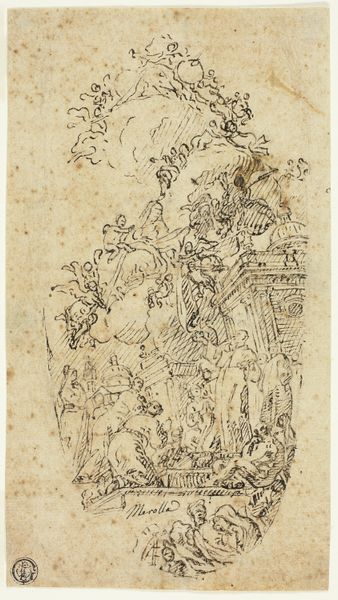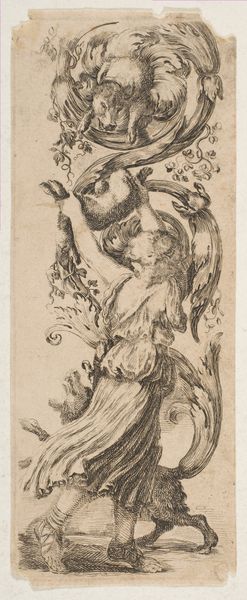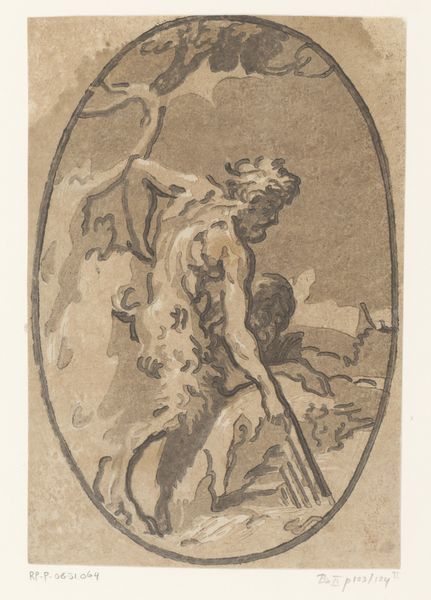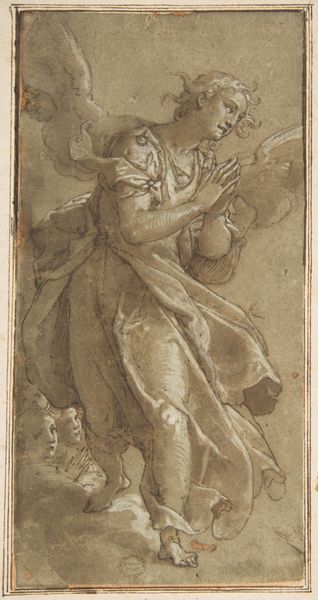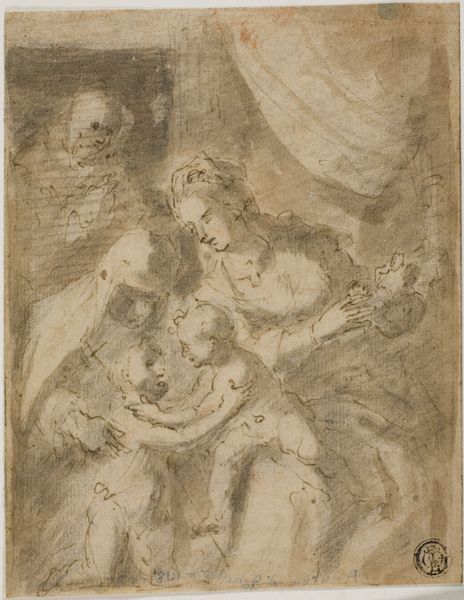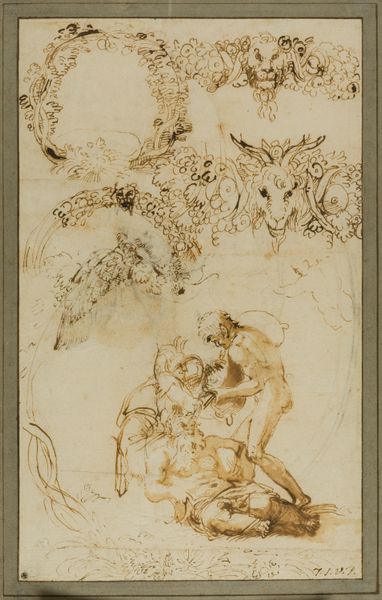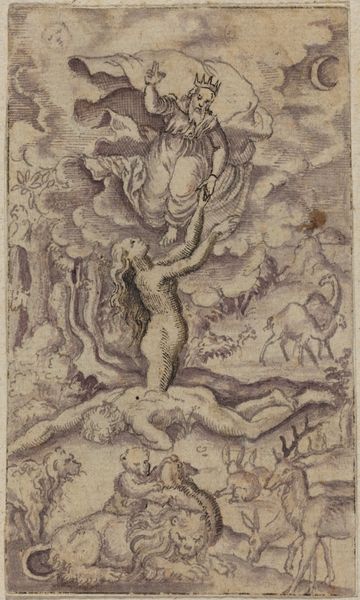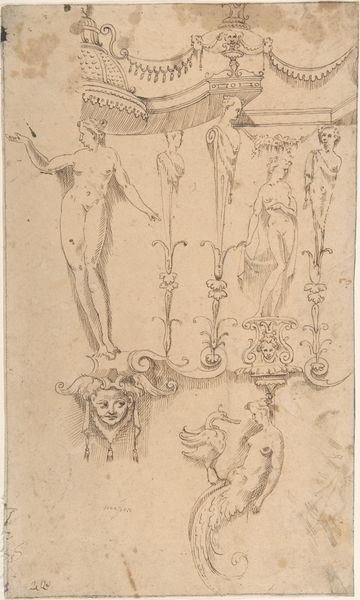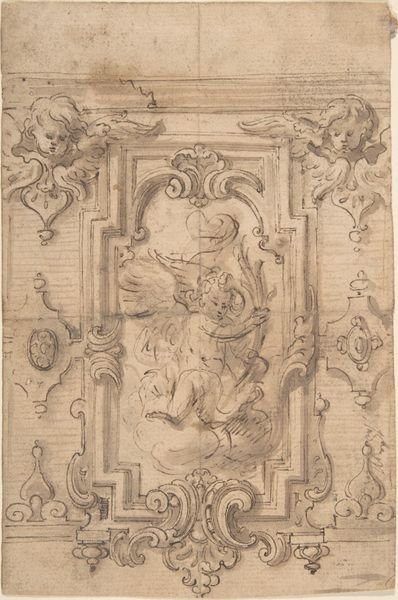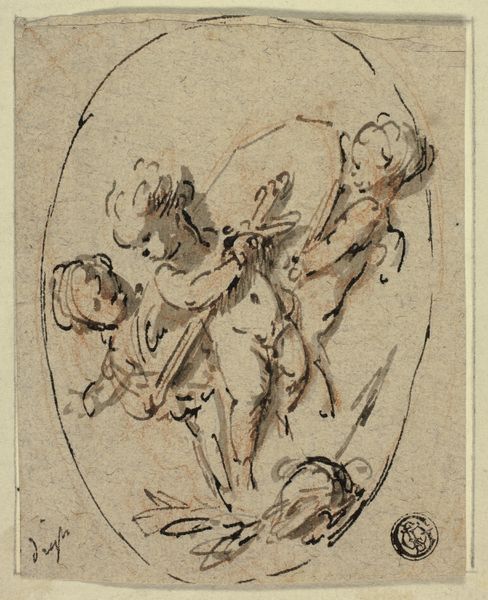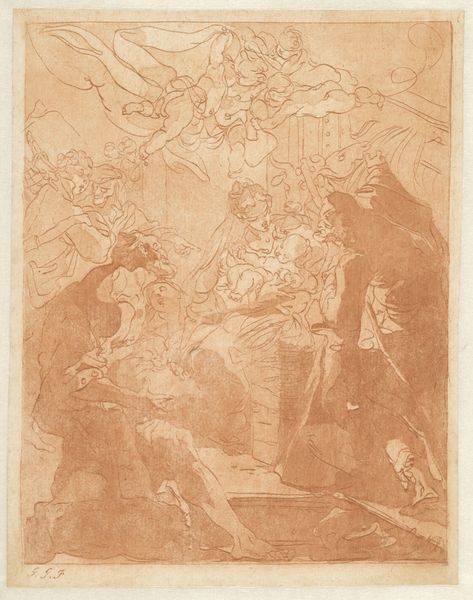
drawing, ink
#
drawing
#
ink painting
#
mannerism
#
figuration
#
ink
#
history-painting
Dimensions: overall: 31.8 x 22.6 cm (12 1/2 x 8 7/8 in.)
Copyright: National Gallery of Art: CC0 1.0
Curator: Before us is Giuseppe Porta’s "Saint Michael with Lucifer," created around 1556-1560. It’s an ink drawing showcasing a dynamic struggle. Editor: My immediate reaction is a fascination with the earthiness of it. You can practically feel the grit of the ink and the weight of the struggle through the monochrome. Curator: Absolutely. The medium underscores the raw power dynamics at play. Saint Michael, often interpreted as a symbol of divine justice, is depicted here in full battle regalia, poised over a defeated Lucifer. The scales in his hand add a layer of complexity, reminding us of the act of judgment. It begs the question of what kind of justice are we talking about and whose interest does it serve? Editor: I am drawn to how Porta utilized ink to convey the details, particularly in the wings and Lucifer's tormented expression. How the artist manipulated ink wash to achieve dramatic chiaroscuro enhances the emotional impact, creating this contrast between the textures of divinity and the materiality of fallen grace. The quality of the handmade paper provides a suitable backdrop. Curator: That tension is palpable, isn’t it? Consider the historical context – the late Renaissance, a period rife with religious conflict and reformation. The image resonates beyond a simple battle of good versus evil. It also represents power, both the heavenly kind and its earthly manifestations in the Church. We must also see the influence of mannerism. Editor: True, and if we look at the labor invested, this wasn't just a spontaneous sketch, but rather an intentional and labored material object. How does the cost of labor, and the type of ink impact its symbolism and our engagement? Curator: The production tells a lot, that's for sure! Looking through our contemporary lens, it forces us to question systems of power, oppression, and resistance as we still find it today. Editor: I see that clearly. It's powerful to observe the artistic creation as a complex arrangement of social processes and meanings. Curator: Exactly. This piece compels us to reflect on who wields the power, who passes judgment, and who defines the narrative. Editor: Indeed. The work embodies material exploration. I appreciated getting into the process, and understanding the materiality of the final result. Curator: And it is this social lens that grants insight. I can see the layers beneath the aesthetic, provoking new ways of considering historic narratives.
Comments
No comments
Be the first to comment and join the conversation on the ultimate creative platform.
